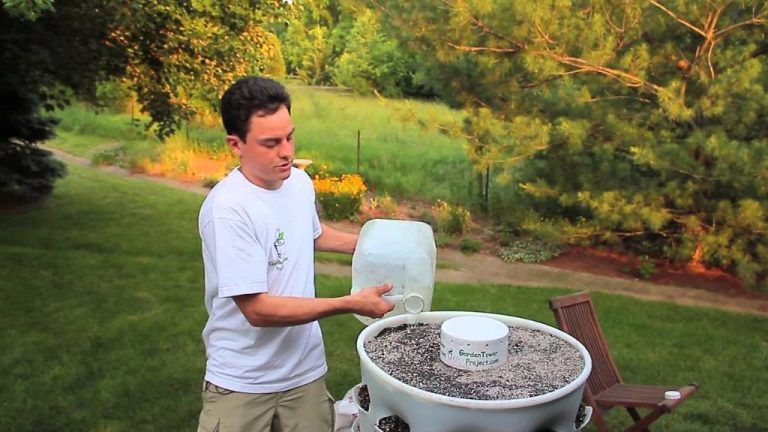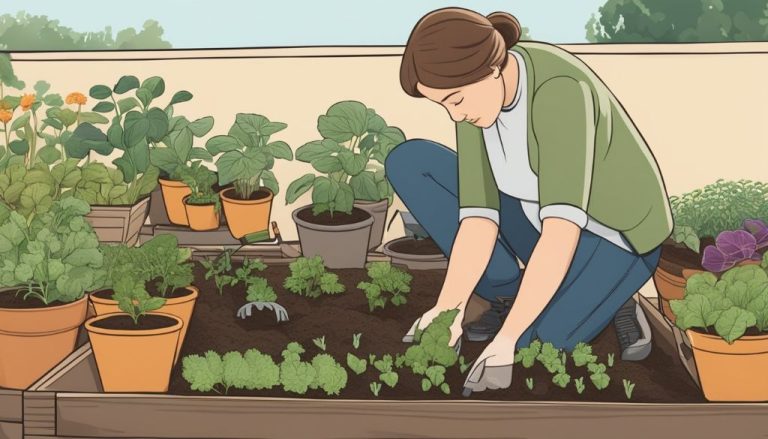Heirloom Vegetables: Preserving Heritage Varieties In Your Garden
Heirloom vegetables are valued for their unique flavors, colors, and history. But what exactly classifies a vegetable variety as an heirloom? There are a few common criteria used to define heirloom vegetables:
According to the Press Republican article “Cornell Ag Connection: Heirloom Vegetables – Planting the Seed“, heirloom vegetables are generally considered to be varieties that have been passed down through multiple generations of a family.
The Gardening Cook article “Why Heirloom Vegetable Seeds? – 6 Advantages for Your Garden” notes that heirloom varieties are typically at least 50 years old.
In summary, heirloom vegetables are open-pollinated varieties that have been preserved and handed down over many generations, usually for at least 50 years or more.
History
Heirloom vegetables have a long and rich history, dating back hundreds of years. The term “heirloom” refers to any open-pollinated vegetable variety that has been passed down through multiple generations of a family (The History of Heirloom Vegetables). These vegetable varieties are also called “heritage” or “historic” varieties.
Many heirloom vegetables originated in Europe or Asia and were brought over by immigrants to North America. For example, the Brandywine tomato was first grown in the late 1800s by Amish farmers in Pennsylvania. Other popular heirlooms like the Mortgage Lifter tomato were created by farmers experimenting with cross-breeding (What Are Heirloom Vegetables?). These unique vegetable varieties were carefully saved and handed down for generations because of their superior flavors, colors, or plant hardiness.
Beforehybrid varieties became popular in the 1940-50s, most vegetable gardening relied on heirloom seeds. However, with the rise of commercial seed companies, many heirloom varieties were lost or fell out of fashion (The history of heirloom vegetables). Fortunately, thanks to seed saving organizations and individuals, many heirlooms have survived and are regaining popularity today.
Benefits
Heirloom vegetables offer unique flavors, colors, and shapes that are often lost in commercial hybrid varieties bred for mass production and long shelf life.Cultivating a Legacy: The Essential Guide to Growing … Heirlooms have a depth of flavor not found in grocery store produce, with nuanced tastes that reflect centuries of selection by home gardeners. Many heirlooms have stunning and varied colors beyond the typical greens and reds. Eclectic shapes like round tomatoes, ruffled lettuces, and fluted squash make for interesting visual variety.
The genetic diversity preserved in heirlooms allows gardeners to experience this range of unique sensory qualities. Mass market varieties are bred for uniformity, long shelf life, and ability to ripen during shipping, which often diminishes flavor and appearance. Heirlooms connect us to the past, and their exceptional eating qualities are a sensory reminder of why these heritage varieties have been passed down through generations of gardeners.
Challenges of Growing Heirloom Vegetables
While heirloom vegetables offer unique flavors, colors, and a connection to the past, they do present some challenges compared to modern hybrid varieties (The Oak Ridger). Two main difficulties are their lack of disease resistance and lower yields.
Heirlooms have not been bred for disease resistance like many newer vegetables, so they are more prone to common problems like mildews, blights, and wilts. The gardener must be vigilant about identifying and treating diseases. Heirlooms also tend to have lower yields than modern hybrids. While the flavor may be sublime, the total amount harvested is frequently less. With good nurturing and care however, many heirlooms can produce respectable quantities.
While growing heirlooms requires dedication, the taste and diversity they offer often makes it worthwhile for the passionate gardener. By understanding and working with their unique needs, beautiful and delicious heirlooms can flourish.
Popular Varieties
Some well-known and prized heirloom vegetable varieties that are popular to grow include:
Tomatoes: Brandywine – Dating back to the 1880s, this pink beefsteak tomato variety is known for its rich, complex flavor.
Melons: Moon and Stars Watermelon – This melon has a dark green rind with yellow spots, resembling a starry night sky. It has sweet, bright red flesh.
Lettuce: Black Seeded Simpson – An heirloom leaf lettuce dating back to the 1850s. It has a loose, ruffled appearance and mild flavor.
Beans: Cherokee Trail of Tears – This pole bean has a rich, meaty flavor and high yields. It traces its history to the Cherokee tribe in the 1800s.
Herbs: Genovese Basil – Known as the classic pesto basil, it has large crumpled leaves with a sweet, spicy aroma. It’s been grown in Italy since the 16th century.
Starting from Seed
Starting heirloom vegetables from seed requires some special care compared to starting modern hybrid varieties. Heirloom seeds are open-pollinated, meaning they have not been bred for uniformity or other commercial traits. This makes them more delicate and variable in germination times. Here are some tips for successfully starting heirlooms from seed:
Start seeds indoors or in a greenhouse 4-6 weeks before your last expected frost date. Heirlooms need a longer warm period to mature than modern hybrids. Give them an early start by sowing indoors.
Use seed starting mix, not potting soil. Seed starting mixes are sterile and fine-textured for good seed-to-soil contact.

Plant seeds at the depth recommended on the seed packet. This is especially important for heirlooms as they can be sensitive to planting depth.
Water carefully and maintain even moisture. Allowing the soil to dry out can kill heirloom seedlings.
Give seedlings lots of light. 14-16 hours per day of light encourages strong growth.
Transplant on time. Don’t let seedlings get root bound before moving them into the garden.
Be patient. Heirloom seeds can take longer to germinate than modern varieties. Wait the full germination period before giving up on any seeds.
Control temperature carefully. Use a heat mat or grow lights to maintain optimal germination temperatures.
According to https://wildorchardhomestead.com/the-beauty-of-growing-heirloom-seeds/, starting heirlooms from seed allows you to fully experience their unique colors, flavors, and shapes.
Transplanting
Transplanting your heirloom vegetable seedlings at the proper time is crucial for a successful harvest. According to Fine Gardening, it’s important to “harden off” seedlings by gradually acclimating them to outdoor conditions before transplanting. This involves setting them outside in a sheltered spot for a few hours at first, and gradually increasing the time spent outdoors over 7-10 days.
When transplanting, proper spacing is key. Refer to seed packets or plant guides to determine recommended spacing for each variety. Allow enough room between plants for them to mature to full size. Staking or trellising plants like tomatoes and beans can help maximize limited space. Drive stakes into the ground as you transplant for plants that will require vertical support. loosely tie plants to stakes as they grow.
Carefully dig holes for transplants, disturbing the soil as little as possible. Very gently remove seedlings from pots, handling by leaves rather than stems. Place each plant into its hole at the same level it was growing in the pot – do not plant too deeply. Firm soil gently around the roots and water transplants thoroughly after planting.
Maintenance
Consistent care and upkeep is crucial for heirloom vegetables to thrive. Watering regularly at the base of plants without oversaturating the soil is recommended (Top 10 Tips for Growing Heirloom Vegetables, https://blog.southernexposure.com/2023/05/top-10-tips-for-growing-heirloom-vegetables/). Applying organic fertilizer monthly provides nutrients. Staking tall-growing varieties prevents sprawling and keeps fruit off the ground (Top Tips for Growing Heirloom Vegetables, https://www.burpee.com/blog/top-tips-for-growing-heirloom-vegetables.html). Pruning overgrowth allows air circulation reducing disease. Monitor for pest and fungus issues daily.
Pests and Diseases
Heirloom vegetables are generally more susceptible to pests and diseases than hybrid varieties (University of Georgia, https://extension.uga.edu/publications/detail.html?number=C862&title=disease-management-in-the-home-vegetable-garden). Common problems include fungal diseases like blight, mildew, and root rot, as well as pests like aphids, beetles, and caterpillars. However, there are many organic and natural solutions for controlling diseases and pests in your heirloom garden.
Start with preventative measures like crop rotation, well-drained soil, proper spacing between plants, and removal of weeds or diseased plants (University of Tennessee, https://rutherford.tennessee.edu/wp-content/uploads/sites/200/2022/05/W316-Home-Vegetable-Garden-Disease-Control.pdf). Also, select disease-resistant heirloom varieties when available. At the first sign of pests, try gentle solutions like streams of water, hand removal, or insecticidal soaps before moving to stronger organic pesticides if needed. For fungal issues, remove affected leaves immediately and improve air circulation with proper spacing and pruning. Foliar sprays of neem oil or Bacillus thuringiensis can help prevent the spread of fungal diseases.
With vigilant scouting and prompt organic treatment, most pest and disease issues can be managed in heirloom vegetable gardens without losing your harvest.
Harvesting and Storage
Knowing when to harvest heirloom varieties is important for ensuring you collect ripe, viable seeds. Unlike hybrids, heirlooms are open-pollinated so their seeds will grow true to type. Follow these tips for harvesting:
- Harvest fruits and vegetables once they are fully ripe and have reached their peak flavor. This is usually indicated by color change and softening of the fruit/vegetable.
- For flowers and herbs, harvest just as the seeds start to mature and dry inside the flower heads or seed pods. timing varies by plant.
- Use pruning shears or scissors for a clean cut and avoid damaging the plant.
- Harvest amounts depend on how many seeds you want to save. Try starting small with just a few fruits/pods.
Proper storage is also key for maintaining seed viability over time. Follow these storage tips:
- Allow seeds to dry fully on the plants before harvesting if possible. If not, dry them in a warm spot out of direct sunlight.
- Extract seeds from fruits/vegetables and remove any pulp remnants. Spread seeds in a single layer on paper towels or screens to finish drying.
- Place thoroughly dried seeds in moisture-proof containers like ziplock bags or glass jars. Label with variety and year.
- Store in a cool, dark place with consistent temperature around 40-50°F. Avoid humidity fluctuations.
- Most seeds stay viable for 2-10 years if stored properly. Test germination rates yearly.
Following the proper harvesting and storage methods will help maintain the integrity of your carefully grown heirloom seeds. Be sure to research specific methods for each variety you plan to save seed from. For more seed saving tips visit: https://www.farmersalmanac.com/saving-heirloom-seeds






